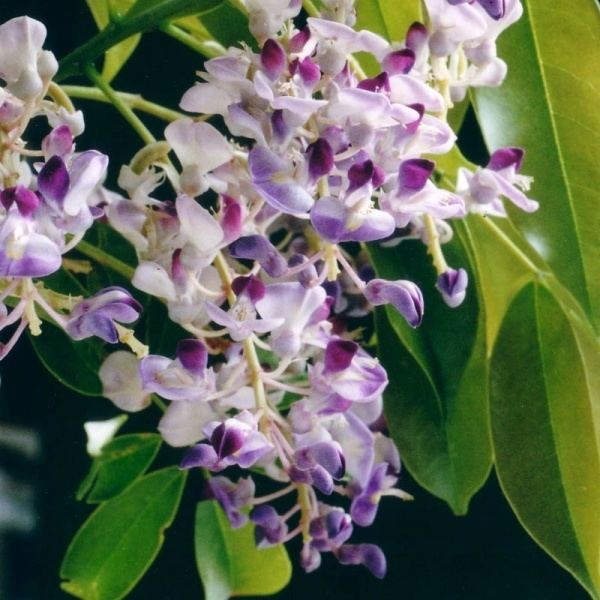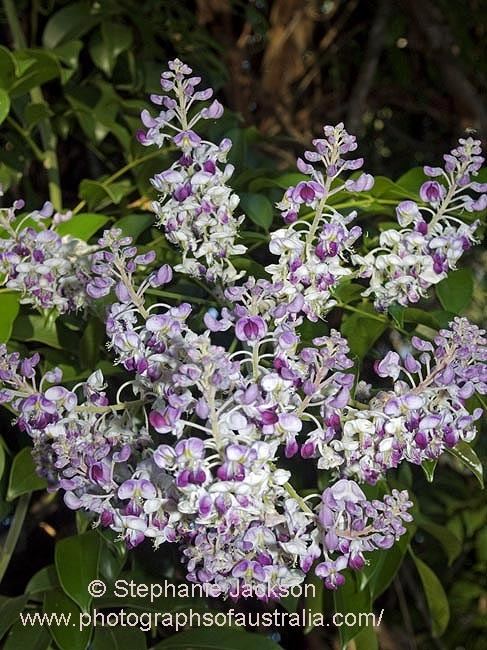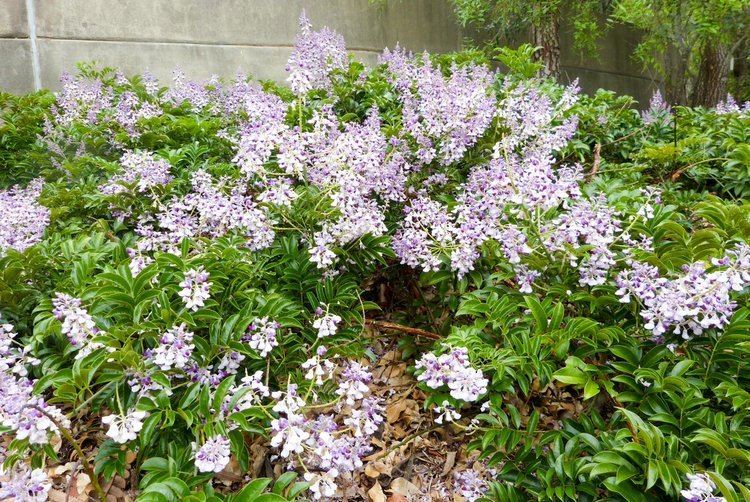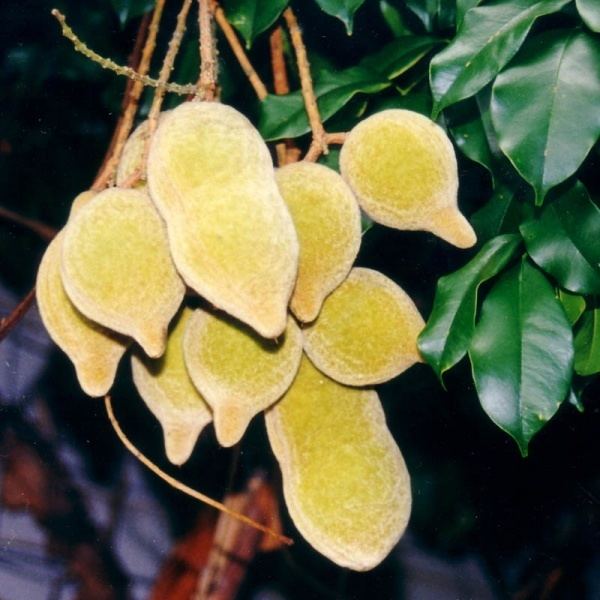Kingdom Plantae Family Fabaceae Rank Species | Order Fabales Genus Callerya | |
 | ||
Similar Callerya, Hardenbergia comptoniana, Pararistolochia praevenosa, Parsonsia straminea, Breynia oblongifolia | ||
Callerya megasperma, also known as native wisteria, is a species of vine in the family Fabaceae native to eastern Australia. It was initially described as Wistaria megasperma by Ferdinand von Mueller in 1859 from a specimen collected at the Richmond River. It was long known as Millettia megasperma, having been renamed by George Bentham in his Flora Australiensis in 1864. It was given its current binomial name in 1994 by A.M. Schot. Its species name is derived from the Ancient Greek words megas "large" and sperma "seed", and refers to its large seeds.

It is a vigorous vine which can reach 20 m (66 ft) in length, with woody stems with flaky bark. It has pinnate (compound) leaves 15 to 30 cm (6 to 12 in) long, each one made up of 7 to 19 smaller shiny oblong-elliptic to obovate leaflets, which measure 4–10 cm (1.5–4 in) long and 2–3.5 cm (0.79–1.38 in) wide. Flowering is from July to October, the flowers growing on racemes 10 to 25 cm (4 to 10 in) long.

Callerya megasperma is found in southeastern Queensland and the northeastern corner of New South Wales south to the Richmond River. It grows in rainforest. It is a valuable indicator species as it often grows in association with the birdwing butterfly vine (Pararistolochia praevenosa), one of the only food plants for the caterpillars of the rare Richmond Birdwing Butterfly (Ornithoptera richmondia). Callerya megasperma itself is a food plant for the caterpillars of the pencilled blue (Candalides absimilis) and narrow-banded awl (Hasora khoda) butterflies.

It is an attractive garden plant, but grows very rapidly when young and needs ample room to grow and a structure which can bear its weight. It requires good drainage. It has been successfully cultivated in Melbourne, where it took 20 years to flower.



